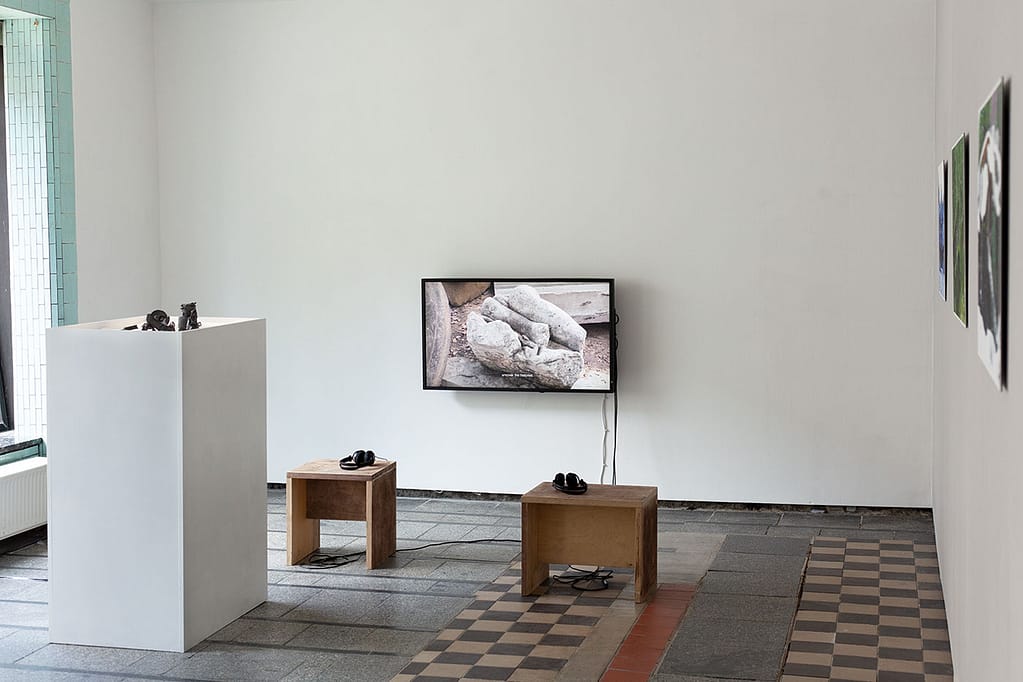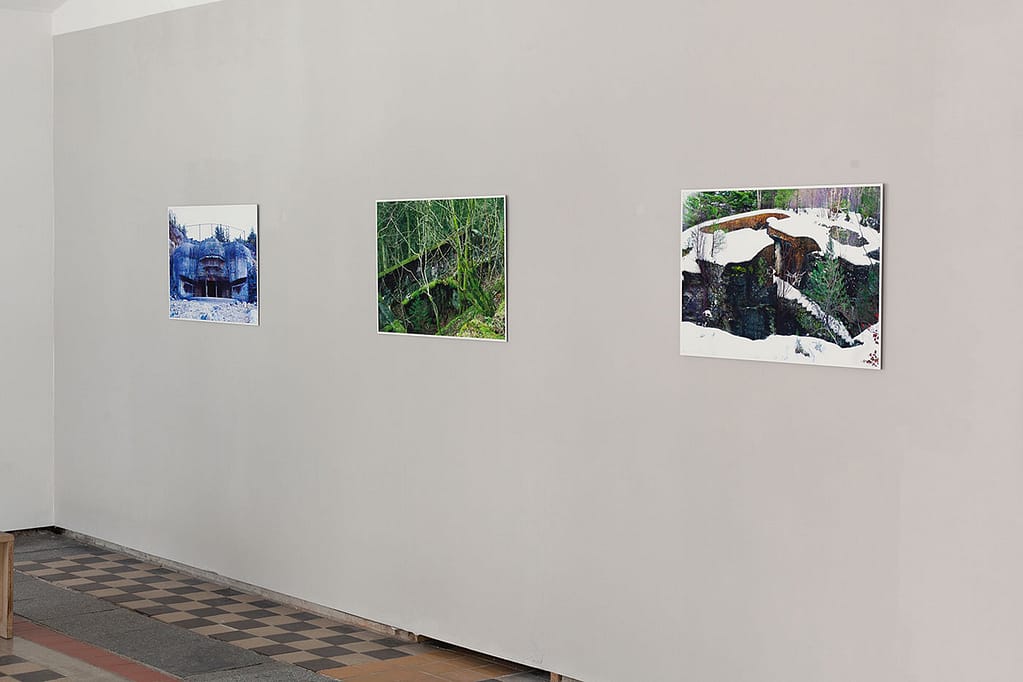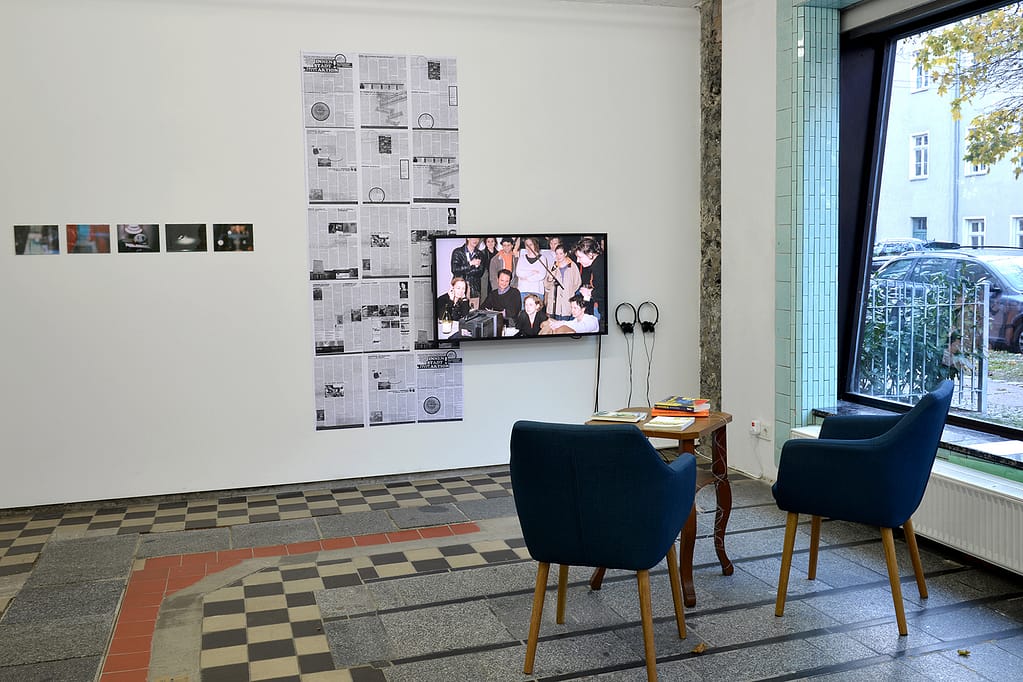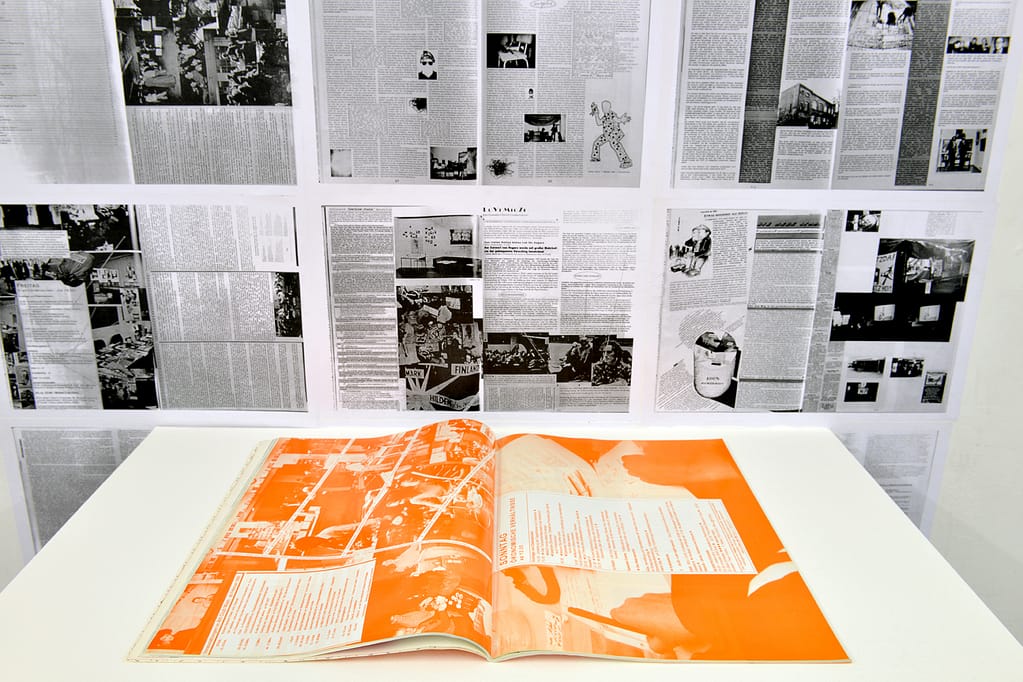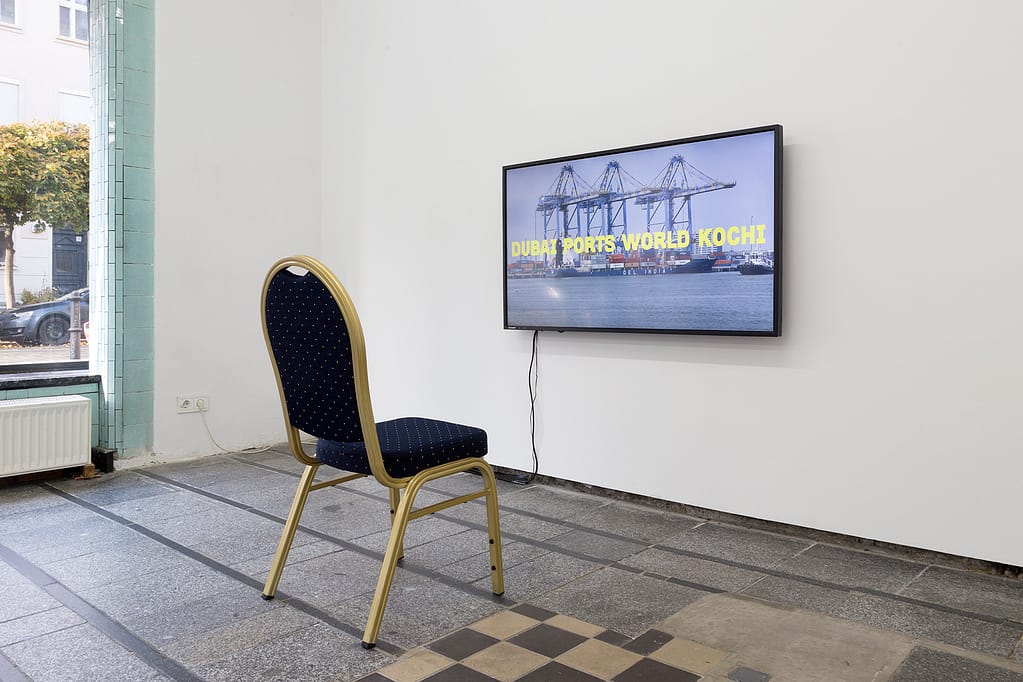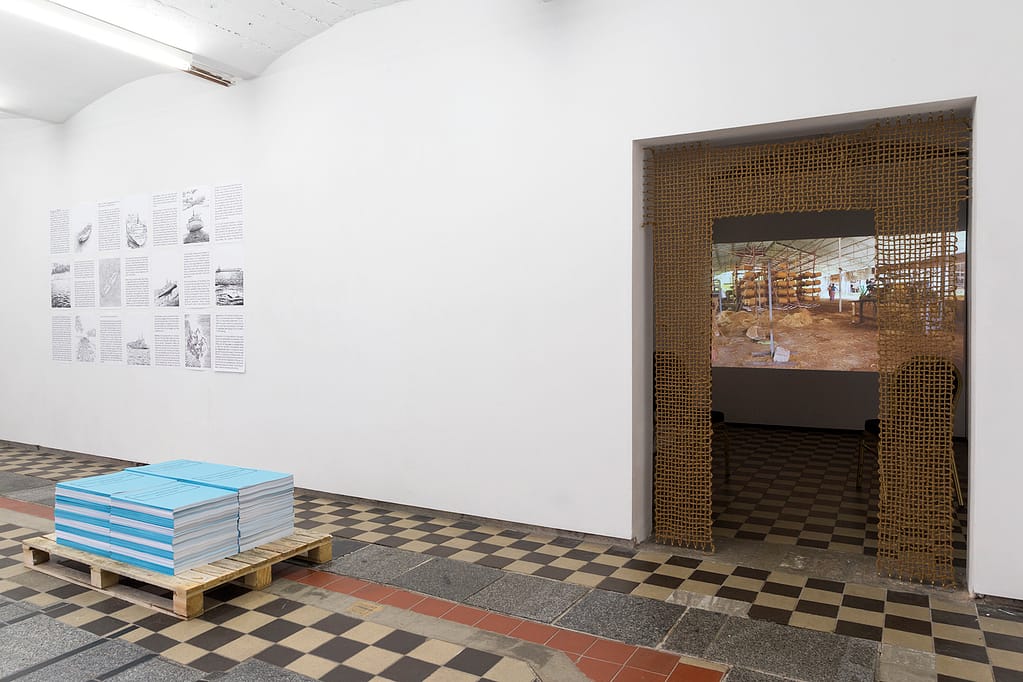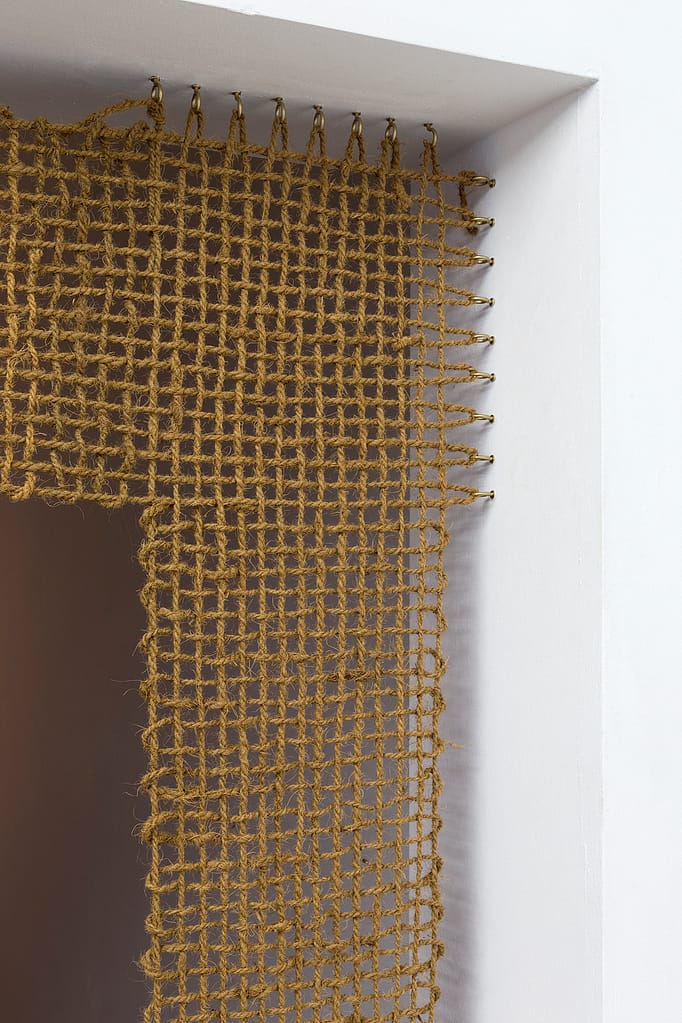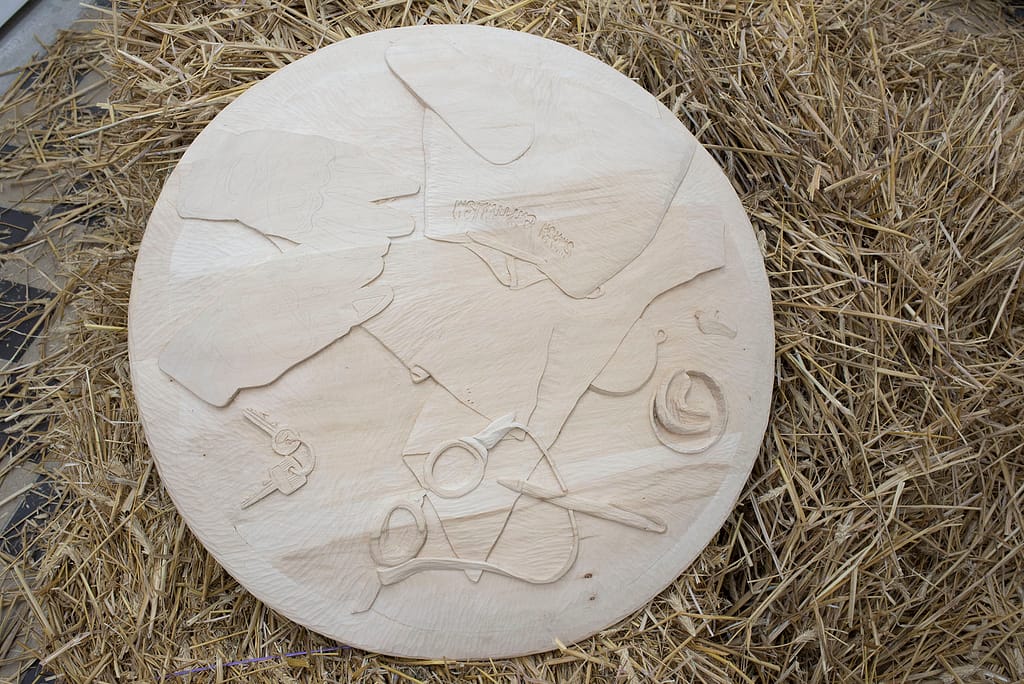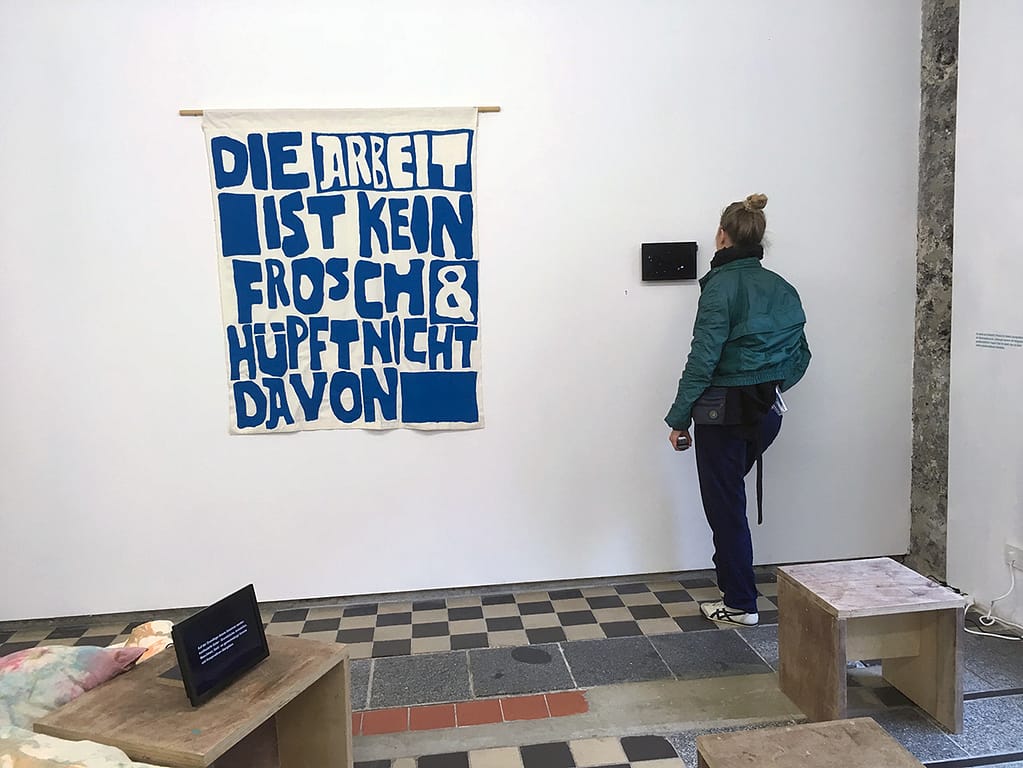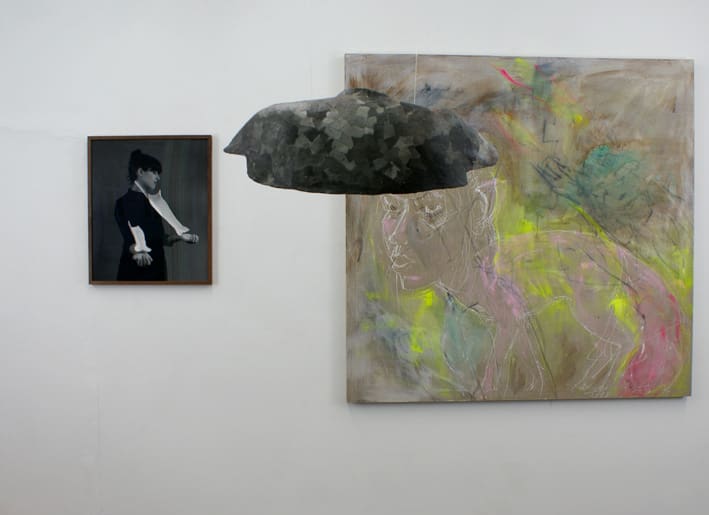Vermeir & Heiremans, Julia Cremers & PARALLAX Lab

Learning to dwell otherwise within the ruins
Vermeir & Heiremans, Julia Cremers & PARALLAX Lab
Exhibition: March 19 – April 25, 2021
In its upcoming exhibition, after the butcher is pleased to present two artist positions whose work deals with buildings, ruins and questions of their value creation. At the same time, both positions approach the broad field of speculation and reclaim agency – new modes of action – against it.
The artist duo Vermeir & Heiremans will show the short film A Modest Proposal (in a Black Box). The film explores whether “financialization” can be repurposed as a tool for creating more just conditions. The artists propose a model to financialize public art collections, museum properties and/or their symbolic capital. This model aims to create a cycle of wealth that benefits not only investors and institutions, but also the creators of these assets, the original stakeholders – the artists and art workers.
As a case study in the film, Vermeir & Heiremans discuss the financialization of the Pump House Gallery in Battersea Park, London with their lawyer. The gallery is located near Battersea Power Station, a former coal-fired power station from the mid-20th century, which after 40 years of vacancy is currently being converted into a luxury shopping center including luxury flats with the participation of “starchitects” such as Frank Gehry and Foster & Partners. The rising property values in its neighborhood will “pump up” the asset value of the gallery building. Introducing this into the artists’ global financial model will distribute surplus values for the wider art community.
Which part of this is ironic critique and which is longing for participation? In any case, the artists expose the social tensions and contradictions generated by speculation and profit maximization alongside the fundamental need for housing.
Julia Cremers and PARALLAX show their collective video and 3D works Ruin Figments and Reconstructed Memories. Both works are centred around an architectural site built in Vienna’s Schoenbrunn Palace Park in the year 1778, depicting the remains after the Roman siege of Carthage in 146 BC. This fake ruin, in line with landscaping fashions of the 18th century, was meant to manifest the power of the Habsburg Monarchy, claiming their imperial pursuits by identifying with the victorious Roman Empire: a speculation on cultural capital.
PARALLAX’ work is a further reimagining of this folly within the present. The ruin’s virtual counterpart is extracted through photogrammetric methods, then distorted and rematerialized. The resulting 3D printed sculpture calls attention to the implicit alterations at each reproduction stage, hereby questioning the cultural impact of imperial collapse and its appropriation by new power structures. The video essay is another uncovering of this layered entity, exposing the material resources and human efforts that are required for the construction of (virtual) spaces.
A third visual element are the photographs Ruins by Julia Cremers, which show military fortifications from the period of Nazi fascism and the German occupation in Bergen/Norway. Today, they serve as a backdrop for raves. The repurposing of these historically burdened sites for festive events can be seen as both problematic and liberating at the same time. It represents a form of reappropriation of charged places, overlaid with new narratives and cultural meaning, thus continuing to write history.
A Modest Proposal (in a Black Box) will be accompanied by a publication which brings together a series of essays that were presented in a symposium, organized by Vermeir & Heiremans at the Royal College of Art, London in 2018.
Film credits:
HD Video, 28′ 7″, sound & colour, UK-Belgium, 2018
with Luke Mason, Heike Langsdorf, Vermeir & Heiremans
Camera: Amir Borenstein
Sound: Justin Bennett
Production: Jubilee vzw, with the support of: The Flemish Community; Art et Recherche asbl; Federation Wallonie-Bruxelles; Pump House Gallery; Wandsworth Council; Enable Leisure and Culture; Art Council England; Cockayne-Grants for the Arts; The London Community Foundation
Ruin Figments and Reconstructed Memories
Video essay and 3D printed sculpture
Film credits:
HD Video, sound & colour, Germany-Austria, 2021
Camera: Lena Kocutar, Daniel Viladrich Herrmannsdoerfer, Julia Cremers
Sound and Editing: Julia Cremers
Research: Lena Kocutar, Daniel Viladrich Herrmannsdoerfer, Polina Nikoulitcheva, Julia Cremers
Ruins
Three digital prints, photography
by Julia Cremers
Vermeir & Heiremans presented work at: 10th and 13th Istanbul Biennial (2007 & 2013), Arnolfini, Bristol (2009), Nam June Paik Art Center, Yongin (2010), Viennale, Vienna (2011), 7th Shenzhen Sculpture Biennial (2012), Manifesta 9, Limburg (2012), Argos, Brussels (2012), Extra City, Antwerp (2012), Riga Art Space (2013), Rotwand Gallery, Zurich (2014), Triennale Brugge (2015), Dojima River Biennale, Osaka (2015), Georg Kargl Gallery, Vienna (2015), Transmediale, Berlin (2016), Bucharest Biennale 7 (2016), Glassyard Gallery, Budapest (2018), The Atlantic Project, Plymouth (2018), Pump House Gallery, London (2018), Carico Massimo, Livorno (2019), Kunsten Museum of Modern Art, Aalborg (2020).
Julia Cremers graduated with a Bachelor of Audiovisual Art at the Gerrit Rietveld Academy Amsterdam in 2016, and a Master of Fine Art at the University of Bergen Faculty of Fine Art in 2018. Julia presented work at: Dutch Design Week Eindhoven (2014), Van Nelle Fabriek Rotterdam (2015), Gallery Bart Amsterdam (2016), Eye Film Museum (2016), Bergen Kunsthall (2018), Deichtorhallen Hamburg (2019), Errant Sound (2020), Alte Feuerwache Köln (2020), Berlin School Of Sound (2021). Cremers has been a member of Errant Sound since September 2020.
PARALLAX Lab, Ruin Figments and Reconstructed Memories is a collaborative project initiated by artist Julia Cremers with students Daniel Viladrich Herrmannsdoerfer (Technomathematics, TU), Polina Nikoulitcheva (Architecture, TU) and Lena Kocutar (Lensbased Class, UdK). Produced as part of PARALLAX Lab, an initiative of the Berlin University of the Arts and the Technical University Berlin. With the support of FormLabs Berlin.
funded by:

